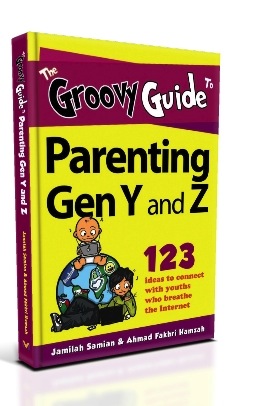
………………………………………………………………………………………………………………………………….
INTRODUCTION:
Gen-Y and Z Are Fast Invading the World
PART ONE:
Why We Struggle with Different Generations
PART TWO:
Instant Gratification: “I Want It Now.”
PART THREE:
Entitlement: “I Deserve It Just Because.”
PART FOUR:
Multitasking: “I Can Do Many Things At Once.”
PART FIVE:
A Special Note to Teachers, Lecturers and Educators
PART SIX:
Gen-Y @ Work
PART SEVEN:
Different Generations, Different Motivations
………………………………………………………………………………………………………………………………….
PART ONE
WHY WE STRUGGLE WITH DIFFERENT GENERATIONS
FOUR GENERATIONS – WHICH GROUP ARE YOU IN?
Let’s do a little test. What year* were you born?
– If you were born before 1946, you are a Veteran.
– If you were born between 1946 and 1964, you are a Baby Boomer.
– If you were born between 1965 and 1980, you belong to Generation X or Gen-X for short.
– If you were born between 1981 and 1994, you are a Generation Y or Gen-Y**.
– If you were born between 1995 and 2009, you are a Gen-Z.
– The future generation is called Gen-Alpha.
* These timelines are not set in stone. Different researchers use different timelines.
** Gen-Y are also known as Millenials, Generation Next, Net Generation and Echo Boomers, among others.
MY MUM, MY SON AND ME
JAMILAH’S STORY:
My mother is a Veteran. I am a late Baby Boomer. My mother was only five when the Japanese took over then Malaya. When I was little, she loved to tell me stories about the Japanese occupation. Each time she held me spellbound with tales of how she and her family were sometimes forced to eat biji getah (rubber seeds), tapioca and whatever edibles they could find.
“It’s amazing,” she will say with a look of wonder in her eyes, “how one can survive with so little. Try eating one of those rubber seeds today if you don’t believe me. I’m certain it will make you positively ill.”
I never touched them. The way my mother said it, I’m sure I will be rushed to the hospital if I ever come close to one. Still, much as I tried, I can never truly feel the hunger and depth of terror she and her family experienced at the hands of the Japanese.
Soon after I graduated, I got a job with a multinational company. My eldest son was often ill. After his brother was born, I quit my job to set up a home business so I could look after them both better. After all times had changed; the fax machine was there. E-mail was there. Communication had gone online. My contacts were just a phone call away.
I could make appointments and meet clients if necessary at my own convenience. But my mother, having grown up in a time when going to work means “getting up, dressing up, starting the car engine after a rushed breakfast, spending an entire day at the workplace and coming home dead tired” cannot fathom how someone can sit for hours in front of the laptop without stepping out of the front door and still call it “work”.
She found it equally perplexing that I will sometimes head straight to my “work station” (I had converted the garage into a home office by then) at odd hours still dressed in my pyjamas. Until today, the only picture she has in her mind of work is of someone toiling away in a brick and mortar building some place, any place, but certainly not in a house. In her mind, work cannot take place inside a home. Whenever a relative or friend asks her about me, she will say: “Milah tak kerja! (Milah – that’s yours truly) is not working!”
At twenty-five, my eldest son grew up seeing his dad, uncles, aunts and neighbours setting off to work in the early hours of the morning only to return home bone tired every evening. He has seen how stress at work can affect one’s health; his father was diagnosed with cancer during an extremely stressful phase at work. He sees how differently I work; the flexibility with which I am used to.
He knows that I can take an afternoon off to send a sick sibling to the doctor. He notices that on days when I am simply exhausted, I can sleep all day and choose to wake up in the wee hours of the morning to cover lost ground. He is aware of the costs of modern living. He understands that if you fail to balance work and life, the consequences can be life-shattering.
A number of his friends come from broken families. As a computer engineer, he chose to work in a business start-up with his college senior. He enjoys flexible working hours. He can work from home unless he needs to meet clients at their workplace or at the office. He does not see himself working with a giant corporation if it means giving up on the flexibilities he has. Often, discussions with his boss or clients are done online, saving all parties precious resources – time, money and energy otherwise wasted on travelling. More than once he has declared to me, “Mum, I want to be just like you!”
WHAT’S PRIVATE IS NOW PUBLIC
As a teenager, I used to have a diary. Happy moments, sad moments – I poured them all out on my diary’s pages. Each time I finished scribbling in my diary, I will shove it deep into the drawer. I was determined that nobody will get a glimpse of it. In comparison, today if a child of mine doesn’t look too happy and wouldn’t talk to me, I’ll grab my laptop, get online and pop into Facebook or click on his or her blog.
Quite often, it’s all I need to do to find out what’s bothering him or her. What used to be super personal has become public domain. The personal diary has turned into a global diary. Pretty often, anyone and everyone can read into a Gen-Y or Z’s deepest thoughts uncensored. Bottomline: We are coloured by the generation we are born in.
INTERGENERATIONAL DIFFERENCES: WHY DOES IT MATTER?
If you have lived through World War II, you are a Veteran. You know what it’s like to scrounge for food, survive on food rations and running for your life during air raids. You also know what it’s like to live in fear; you will have had to be wily and smart enough to survive those tough years. You are also likely to be more sparing with food and yes, a bit more meticulous with money, especially if it means you need to dig deep down into your pocket. People who come from a different generation who had never been in dire need of money and basic necessities of life may have a hard time figuring out why you are this way.
If you grew up while transistor radios were in vogue, you are most likely a Baby Boomer. As a child you were often told “Kids are seen not heard”. Your Veteran parents did all they could to provide you with what they never had. You worked with the punch card system, used floppy disks, and feel absolutely guilty if you show up late for work or leave earlier than anyone else.
If you had regular doses of Sesame Street, Star Trek and Battlestar Galactica as a kid, you are most likely a Gen-X. You might remember the fall of the Berlin Wall, the outbreak of HIV/AIDS and Challenger – the American space shuttle that exploded soon after take-off. You might have been a teenager when you heard of Indira Gandhi, then Prime Minister of India, assassinated by her body-guard.
People who grow up in the same generation are exposed to certain environments. They had experiences distinct to that generation and therefore share certain similarities in the way they think and behave that’s different from other generations. Intergenerational differences can cause …
THE GENERATION GAP
As humans we all have lots of similarities regardless which generation we belong to. After all, Veterans are direct ancestors of Baby Boomers and Generation X. Baby Boomers are direct ancestors of Gen-Y and Z. Having said that, research proves time and again that people who have gone through similar social, political and environmental influences tend to share certain characteristics due to their common experiences. This makes each generation unique.
As we write this book, some of the older members of Gen-X are married with kids. These kids represent Gen-Z. As major world events unfold, it’s not yet clear how distinct these kids will be from the older Gen-Y. How they turn out has to do with current and future circumstances and trends they are about to experience.
A generation gap is much more than just a literal difference between the ages of people. It is more about differences in how you perceive things and consequently, what you do about them. When you are born in a different generation, you tend to see things differently.
Some people say that Gen-Y and Z are a spoilt bunch, raised by parents who give in to their every demand. Imagine a mother or father — on behalf of her or his daughter — calling a company to wait on standby for a job interview. On the other extreme are those who insist that Gen-Y and Z are the most creative, resourceful and confident humans who have roamed Planet Earth. This book strives to strike a balance between these two contrasting views.
As you read this book, keep in mind that all of us are shaped both by internal (genes) and external (environmental) factors. People form values, attitudes, lasting habits and personalities in part due to experiences in their formative years. People around us including parents, grandparents, teachers, friends, neighbours whom we interact with and the media we are exposed to influence our views and perspectives. Yet every step of the way, our attitudes, values and behaviours continue to be shaped by natural developmental changes that interact with the environment.
………………………………………………………………………………………………………………………………….
WHY SHOULD YOU BOTHER ABOUT GEN-Y AND Z?
From favourite TV shows and the way they speak to how they work, Gen-Y and Z have habits different from other generations. Born wired, they seem to live in a different world. You may not even understand what they are saying or doing, causing a generation gap. Ready or not, you need to deal with the Gen-Y and Z in your midst – they are your nieces, nephews, cousins, kids, students, staff and bosses!
The Groovy Guide To Gen-Y and Z is straightforward and easy to read. The authors are professionals who understand fully well the challenges that come with parenting and managing Gen-Y and Z. Learn how you can deal with attitudes that Gen-Y and Z grow up with:
– “I want it now.”
– “I deserve it just because.”
– “I’m entitled” and many more
Starting with Chapter One: Gen-Y and Z Are Fast Invading The World, you will discover 123 contemporary ideas to connect with two generations that eat, sleep and breathe the Internet. The book comes with a special note to teachers, lecturers and educators, plus tips for how to manage and lead Gen-Y and Z at work. Understanding Gen-Y and Z gives you to power to communicate effectively with them, paving the way to a smarter, happier and more successful you.
………………………………………………………………………………………………………………………………….
“A much-needed book for parents and others who have to manage and parent Gen-Y and Z at home and at the workplace . . . filled with many great ideas . . . That is the gem of this book – real life situations, conversations and solutions.” – Brigitte Rozario, ParenThots (The Star)
“It makes perfect sense! A critical read for those who want to improve their relationships and happiness with their Gen-Ys and Gen-Zs.” – Zaid Mohamad, Smart Parents’ author & columnist



